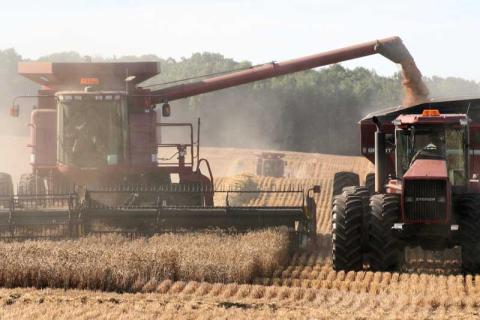Agriculture in Grey County by the Numbers
Statistics Canada has released the 2016 Census of Agriculture and Grey County continues to thrive despite national trends. Grey is adding more farms, is retaining and attracting younger farmers and is seeing a large increase in farm earnings.
“Agriculture has deep roots in Grey County and the new Stats Canada data confirms its importance,” said Alan Barfoot, Grey County Warden. “Grey County is proud of our farmers and wishes continued success for all of those who have chosen this vital occupation.”
Grey continues to have an extremely diverse agricultural economy. Large and small farms alike are producing a wide variety of agri-food products. Between 2011 and 2016 the county added 56 new farms, attracted young farmers, saw gross farm earnings jump, and increased overall acres in production while protecting more vulnerable wetlands.
The total number of farms nation-wide decreased by 5.9%; however Grey County gained 2.5%. That’s a jump from 2,248 to 2,304 farms in active production since 2011. In the same five years there was a 61% increase in gross farm receipts from $288,295,498 to $463,676,995. These figures are largely influenced by gains in commodity prices worldwide.
The median age of farmers continues to rise across the country and now stands at 55 both in Grey County and nationwide. In contrast to that trend, Grey added young farmers at more than double the national rate with a 20% increase in farmers under 35 years old.
“We are encouraged by the influx of young and new farmers into Grey County,” said Ray Robertson, Executive Director and President of Grey Ag Services. “Our land value is still much more economical than in most parts of Ontario and we know people are looking to leave urban areas and seek new opportunities. Instead of creating legislation to cap pricing in urban areas, why not consider incenting more people to choose a rural life? Grey County is a place where businesses and families can thrive.”
The 41 data sets in the census measure everything from farm size and crop and livestock type, to demographics, on-farm employment, succession planning, and the use of fertilizers, irrigation, renewable energy and advanced technology. It will take time to analyze all the data in the latest census figures, but here are some other noteworthy numbers and facts:
- The biggest increases were in micro farms, or those between under 10 and 69 acres; and in huge farms, those over 2,240 acres and up
- Farmland in production increased in all municipalities except Chatsworth and Town of the Blue Mountains, which saw small decreases
- Natural and seeded pasture land decreased in favour of cash crops; Grey County saw the highest percentage land use change in southwestern Ontario
- Cow-calf operations and the number of animals produced decreased nationwide, but Grey County farms increased beef steer and heifer production
- Sheep farms decreased by 25% in Grey, but the total production of sheep increased by 15%
- There was a 40% jump in apiculture (beekeeping) in Grey
- West Grey has a significant organics sector, followed by Meaford
Grey County council recently approved a Local Agri-Food Strategic Plan. The latest census data will be added to the strategy to help the county prioritize projects to support agriculture and food for the next 3-5 years.
Staff have already started working on an asset map that will capture data for participants across the entire agri-food value chain. The map will include farms, processors, storage and distribution services, retailers, restaurants, tourism partners, organizations and suppliers of inputs to the agri-food sector. It will also identify the infrastructure required to service the sector to keep it strong and vibrant. A public-facing version of the map will be housed on the Made in Grey website.




